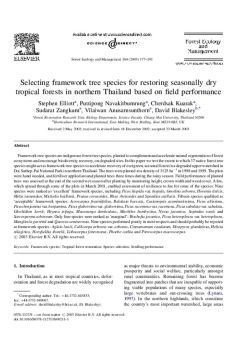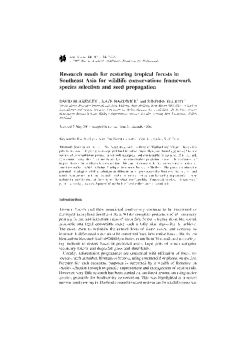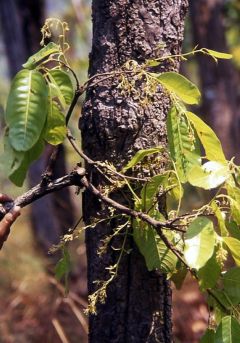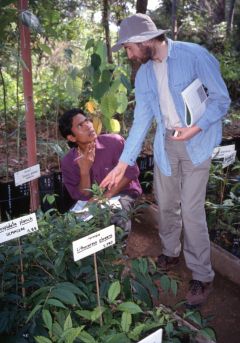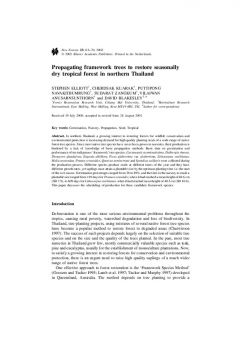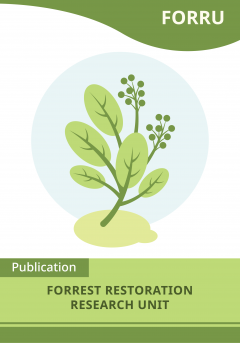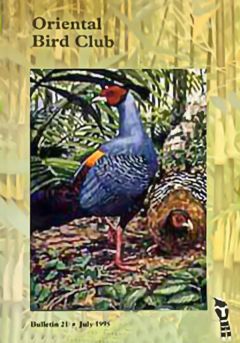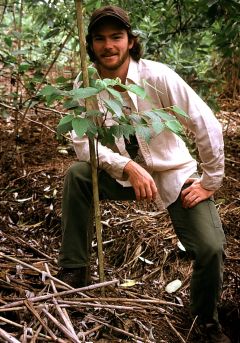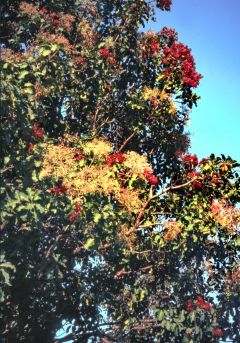Publications
71: Selecting framework tree species for restoring seasonally dry tropical forests in northern Thailand based on field performance
ABSTRACT: Framework tree species are indigenous forest tree species, planted to complement and accelerate natural regeneration of forest ecosystems and encourage biodiversity recovery, on degraded...
72: Selecting seed trees for a forest restoration program: a case study using Spondias axillaris Roxb. (Anacardiaceae)
Spondias axillaris Roxb. (Anacardiaceae) (synonym: Choerospondias axillaris (Roxb.) Burtt and Hill) is an exceptionally effective framework tree species for restoring seasonal tropical forest...
73: Research needs for restoring tropical forests in Southeast Asia for wildlife conservation: framework species selection and seed propagation
ABSTRACT: Some governments in Southeast Asia, such as those of Thailand and Vietnam, have clear policies to restore large areas of degraded land to native forest. However, knowledge needed for the...
74: Increasing day-length induces spring flushing of tropical dry forest trees in the absence of rain
In many conspecific trees of >50 species highly synchronous bud break with low inter-annual variation was observed during the late dry season, around the spring equinox, in semideciduous tropical...
75: Propagating framework tree species to restore seasonally dry tropical forest: implications of seasonal seed dispersal and dormancy
ABSTRACT: An effective approach to forest restoration in degraded tropical forestland is the so-called ‘framework species method’, which involves planting 20–30 indigenous forest tree species, to...
76: Propagating framework trees to restore seasonally dry tropical forest in northern Thailand
In northern Thailand, a growing interest in restoring forests for wildlife conservation and environmental protection is increasing demand for high quality planting stock of a wide range of native...
77: Effects of forest restoration activities on the species diversity of ground flora and tree seedlings
This study was carried out to determine if planting native trees species and associated activities i.e. weeding and fertilizing in forest restoration, increases diversity of ground flora and tree...
78: Restoring conservation forests in northern Thailand and the monitoring of frugivorous birds
During tropical forest restoration, birds play a crucial role in dispersing seeds from nearby forest into restoration sites. The framework species method of forest restoration is designed to...
79: Forest restoration research in northern Thailand, III: Observations of birds feeding in mature Hovenia dulcis Thunb. (Rhamnaceae)
One of the most important criteria for selecting tree species for planting to restore natural forest ecosystems on degraded sites is their attractiveness to wildlife. The "framework species"...
80: Forest restoration research in northern Thailand: 2. the fruits, seeds and seedlings of Gluta usitata (Wall.) Hou (Anacardiaceae)
Gluta usitata was one of the first tree species we looked into as a potential framework species for restoration lowland deciduous forest. Its red-winged fruits put on a spectacular display at the...
-
- 11: 29
- 13: 25
- 12: 22
- 15: 16
- 36: 14
- 14: 13
- 37: 11
- 10: 10
- 34: 8
- 41: 8
- 16: 7
- 39: 6
- 38: 5
- 55: 4
- 33: 3
- 40: 1
-
- 28: 91
-
- 48: 74
- 21: 19
- 50: 3
- 51: 1
- 52: 1
- 53: 1

